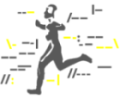





Search | Sitemap | Navigation |  |
|
||||||||||||||||||||||||||
|
||||||||||||||||||||||||||
|
||||||||||||||||||||||||||
|
| ICHD-II 1.3.3 |
1.3.2 Abdominal migraine
Description:
An idiopathic recurrent disorder seen mainly in children and characterised by episodic midline abdominal pain manifesting in attacks lasting 1−72 hours with normality between episodes. The pain is of moderate to severe intensity and associated with vasomotor symptoms, nausea and vomiting.
Diagnostic criteria:
A. At least 5 attacks fulfilling criteria B−D
B. Attacks of abdominal pain lasting 1−72 hours (untreated or unsuccessfully treated)
C. Abdominal pain has all of the following characteristics:
1. midline location, periumbilical or poorly localised
2. dull or `just sore' quality
3. moderate or severe intensity
D. During abdominal pain at least 2 of the following:
1. anorexia
2. nausea
3. vomiting
4. pallor
E. Not attributed to another disorder (see Note 1)
Note:
1. In particular, history and physical examination do not show signs of gastrointestinal or renal disease or such disease has been ruled out by appropriate investigations.
Comments:
Pain is severe enough to interfere with normal daily activities. Children may find it difficult to distinguish anorexia from nausea. The pallor is often accompanied by dark shadows under the eyes. In a few patients flushing is the predominant vasomotor phenomenon. Most children with abdominal migraine will develop migraine headache later in life.
Compendium taken from Cephalagia © International Headache Society 2003.
Author: Markus Dahlem
Last modification of this page: May 05, 2006
| ICHD-II 1.3.3 |
 Top of the page
Top of the page| · | News |
| · | Medical Professionals |
| · | Medical Studies |
Copyright © 2005 Migraine Aura Foundation, All rights reserved. Last modification of this site: August 25, 2006
Thanks to: RAFFELT MEDIENDESIGN and GNU software | webmaster@migraine-aura.org
http://migraine-aura.org/EN/ICHD-II_1.3.2_Abdominal_migraine.html


